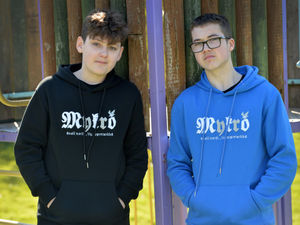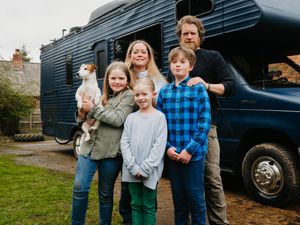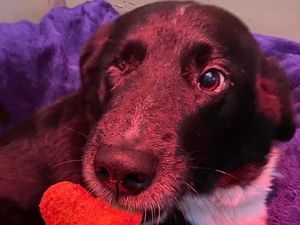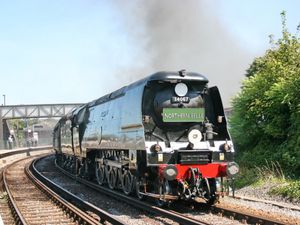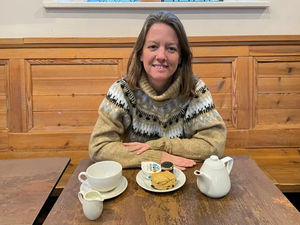Celebrating Shirley: Diamond days of the Shropshire Star's Shirley Tart
This was young Shirley Tart’s big moment. A chance to get her name – well, initials actually – in lights.
Her mission, as a teenage reporter on the Wellington Journal & Shrewsbury News, was to grab an interview with Barbara Moore, a part-Russian doctor in her 60s who was on a marathon walk from John o’Groats to Land’s End during which she happened to pass through Wellington.
Shirley was dropped off in Whitchurch Road to intercept her arrival, but things did not go to plan.
“Nobody had done any homework on what she was like,” she recalls.
“I kept asking her questions and she totally ignored me. She was walking but I was having to run to keep up. This continued until we got to the Charlton Hotel where the council was giving her a reception and she had still not given a comment to me.
“They had promised me a front page spot with my initials on – when you made it big time you got your initials on the story. I was left with no story, no name, no initials. I was sure I was going to be sacked.”
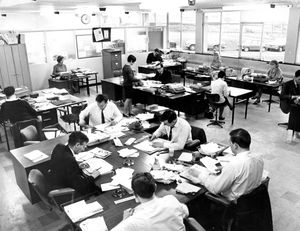
Of course Shirley was not sacked. And after 60 years she is the diamond of Shropshire journalism, with a sparkling career which has seen many highlights.
Shropshire-born, Shropshire-bred, and Shropshire-educated, she has told the stories of royalty and the highest in the land, and given voice to ordinary Salopians who have their own fascinating tales to tell.
“Everybody has their story, and some stories are life changing. And I have met and talked to people who have changed my life.”
Along the way she has done far more than just observing and reporting, being deeply involved in various aspects of Shropshire life.
“For me the biggest of those I would guess would be all I have been able to do for Hope House, both helping raise £3 million for it, and being its first patron – and I still am patron – of which I am very proud. That is definitely a highlight.”
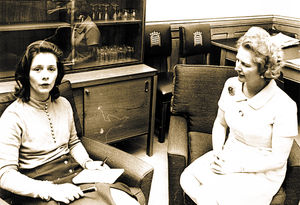
Just a few of her various other contributions are being a deputy lieutenant, a patron of the Ironbridge Gorge Museum, and county vice-president of Guiding.
Shirley was also awarded the MBE in 2005 for her services to the newspaper industry.
Her story starts though in a supermarket car park, on July 21, 1941.
Her birthplace was a two-bedroom cottage, 17 Malinslee, a disappeared home which stood between the disappeared community of Dark Lane, and Dawley.
The site of her early childhood was destined to be swallowed up by the development of Telford town centre.
“I used to say I was born on Carrefour car park, but I can’t say that now, as Carrefour (Telford’s first big ‘hypermarket’) isn’t there any more.”
The eldest of four children, her dad Stan was a steel worker for the Lilleshall Company in Priorslee area, and her mother Christina (nee Gough) was a stay-at-home mum.
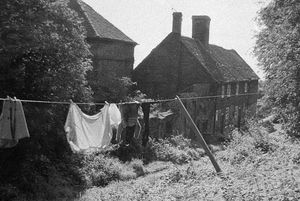
The family moved to Webb Crescent, Dawley, when Shirley was 11 and it was while a pupil at Coalbrookdale High School that her flair for writing began to show itself.
“I was always keen as a youngster on doing little poems and little bits of writing.
“When I was 14-ish I entered an Enid Blyton competition in one of those girls’ magazines, which I won. I can’t remember what you had to do, it might have been a little verse, and I won an Enid Blyton gift hair brush. I know my mum had that hair brush for ages.
“It sort of convinced me that my future might be in the writing field, which was a bit arrogant for a 14 to 15-year-old child.”
She began writing to the editors of the local weekly newspapers.
“At school people talked a bit about going into nursing or perhaps primary school teaching, things I would have been immeasurably not cut out for.
“The Ever Ready battery factory had just opened in Dawley and my mother’s mother threw in the handy little thought ‘why don’t you get her a nice job at the Ever Ready?’ I loved her to bits but I’m quite glad nobody took up her suggestion.”

Her approaches to newspapers bore fruit.
“The general manager of the Wellington Journal & Shrewsbury News was Fred Woolley and apparently I had written to him about the same time that somebody had had the heave-ho and there was a vacancy. He thought I was an omen. I got the job.”
Shirley began working on the Journal, the editor of which was Charlie Lewis, on August 12, 1957. Its offices were in Queen Street, Wellington, but the reporters worked from a caravan at the back because of a lack of room.
These were days in which female journalists were very unusual.
“One of the reporters there was seriously put out and thought it was a trend people would regret in the industry, but mostly the others were fine, and he was all right eventually. It was years before I worked with another female journalist.”
Shirley began work with neither shorthand nor typing skills.
“Mr Woolley said ‘don’t be worried because we can teach you shorthand and typing. We can’t teach you how to be a journalist’. I thought that was pretty telling.”
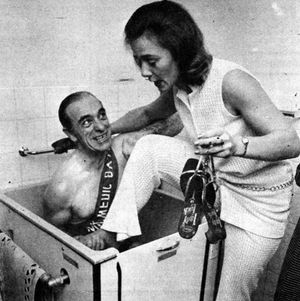
Technical college at Oakengates sorted out the typing, but initially she could not grasp the shorthand.
“It was like hieroglyphics. I couldn’t get it at all. I found this lovely little lady called Mrs Perry who lived in King Street, Wellington, and went to her for half a crown an hour to learn shorthand. She had this blackboard and it was like it translated itself and I could understand it. I still do Pitman shorthand.”
Shirley’s five-year grounding at the Journal involved all the classic cub reporter jobs, including regular visits to the undertaker, where she saw quite a lot of people being brought in on trolleys.
“I think I enjoyed it all because if was different, you felt you were doing a grown up job. I do have a curious streak which people sometimes misinterpret as nosiness.”
At first she would cycle down to the office but later got a moped.
Looking to progress her career, she started applying for a job on the evening paper, the Express & Star – there was no Shropshire Star at the time. She kept writing to the editor Clem Jones and eventually he relented, saying he couldn’t stand her spending any more money on stamps.
Her first six months there were covering undefended cases at Birmingham Divorce Courts, followed by a little spell in Stourbridge. It was all a preparation for a return to Shropshire joining the brand new Shropshire Star at Ketley.
“I was here from May 1964, because we were getting everything in place. It was just so exciting, fantastic, being at the beginning of anything new. I feel so privileged to have had all those opportunities, I can’t tell you. It’s just amazing.”
The first copies of the new evening paper for Shropshire rolled off the presses on October 5, 1964. Shirley was the paper’s first women’s editor.
“Everybody was having to focus on this completely new paper, which was a unique experience for all of us. All we had to work on was our past experience. They were halcyon days.”
As time went on, she was to become the go-to person when it came to big royal occasions.
“If anybody was going to do a royal story, it tended to be me. There was probably an element of ‘it’s what girls do’. I found it exciting and was interested.
“My first big occasion was at Westminster Abbey, in November 1973, the first marriage of Princess Anne, to Captain Mark Phillips. The next big one was Charles and Diana in 1981.
“I have been to every wedding, funeral, jubilee, and state occasion since, in London or Windsor. I would chase them – and I still push just in case they have forgotten me. I have never missed one yet.
“I am a great supporter of our monarchy. Given the alternative, it’s something that should be protected.”
As for highlights, she chooses the Queen’s sodden Diamond Jubilee celebrations in London.
“I thought that epitomised everything about this country, their fortitude as they came down the river in a boat, so wet and waterlogged. They stood there, stoic, and with no problem – until of course the Duke got taken into hospital.
“I thought, what an example of carrying on.
“I was on Chelsea Bridge wearing a black binbag at the time which I had borrowed from a stallholder. We were so miserable, weatherwise.
“Another highlight for me was covering the first free elections in South Africa.”
Of her career in journalism, she says: “The most special thing is all our papers are dedicated to serving our local communities.
“I’m not saying this in any sense of saying what people want to hear, I genuinely believe we have had an amazing role to play.
“It’s been such a privilege to be a part of it really.
“I have always said that if I’m showing anybody around and when I get to the top of the steps in the press room, I have said the day I stand here and don’t get a kick out of it, maybe that’s the day I will call time on it.
“There’s not once I have thought ‘I wish I had done something else’.”

